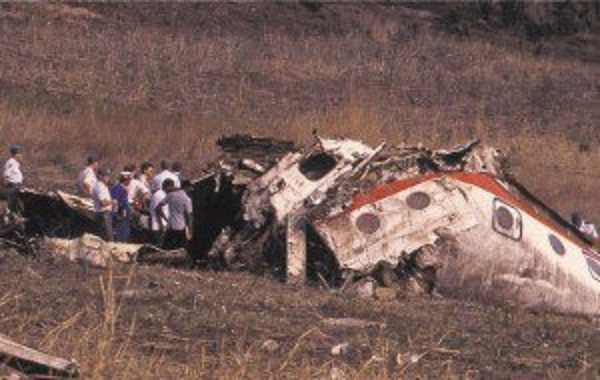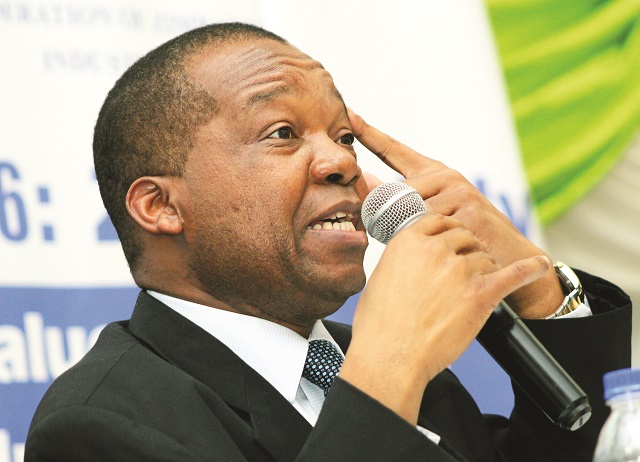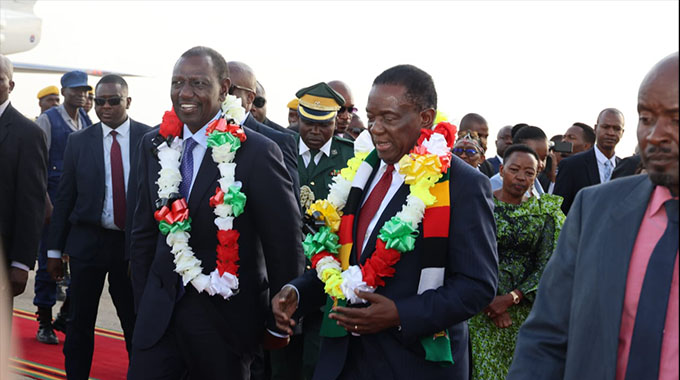Thirty years on – we still have no answers

Lovemore Ranga Mataire
THE first time I saw President Mugabe shed tears was on the morning of October 20, 1986.
I was barely 10 years old but the image on television of a distraught and grief-stricken Prime Minister Mugabe choking with emotion always ricochets each time the death of Mozambican founding President Samora Moise’s Machel is recounted.
President Machel would have been 83 on September 29 this year had it not been for that “mysterious” plane crash in the mountains of Mbuzini near Mpumalanga in South Africa on October 19, 1986.
Riots ensued in Harare soon after news of Machel’s death started filtering through the radio. The Malawian Embassy and the South African consulate became the targets of the protests.
Malawi was mainly targeted because of then President Kamuzu Banda’s latent support of Renamo. The country also bore the ominous tag of being the only country in the region that had diplomatic ties with apartheid South Africa.
While Malawi latently supported Renamo, including giving a Malawian passport to Alfonso Dhlakama, apartheid South Africa were the main funders of the rebel movement ostensibly created by Ian Smith to destabilise Mozambique.
Thus, the death of President Machel plunged the whole region into mourning and uncertainty. But one thing was certain, no sane progressive black person would accept apartheid South Africa’s version of the accident being a result of pilot error.
It was a dastardly act that, however, emboldened freedom fighters to realise that the independence of the region would not be complete without the dismantling of apartheid South Africa.
Exactly six days after the crash, the then Prime Minister of Zimbabwe, Cde Mugabe, addressed a rally of more than 50 000 grieving citizens at Rufaro Stadium where he directly accused apartheid South Africa of killing President Machel. He told multitudes gathered at Rufaro that Zimbabwe was never going to tolerate right-wing rebels seizing power in Mozambique.
Cde Mugabe was quoted by The Herald of October 27, 1986 saying: “Let (then South Africa President PW) Botha get that clear – we are prepared to die to the last man in defence of the sovereignty of Mozambique.”
The then Prime Minister ended his speech by declaring that “Samora Machel is not dead. His revolution will live forever. You can kill the elders but you will not kill the revolution.”
Sadly, although Botha failed to halt the revolutionary tide in the region, 30 years on, there is still no official conclusive data explaining the fatal crash of the Russian made Tupolev-134 aircraft that claimed the life of one of Africa’s liberation icons together with 33 others.
Only nine survived the crash. Among those who survived the crash is Mozambique’s most foremost writer Luis Bernardo Honwana, who authored We killed the Mangy Dog and other Mozambican stories. He was President Machel’s Chief of Staff.
Except for one Russian pilot, none of the surviving Mozambicans have ever volunteered giving their accounts of the accident. While the circumstances behind President Machel’s death remain shrouded in mystery, what has become clear over time and through a series of investigations is that the revolutionary icon was betrayed by some of his own lieutenants in Frelimo. In the absence of real authentic data, conspiracies abound.
Conspiracy theorists proffer a fairly rationale analogy. Prior to his attendance of the Frontline States meeting in Zambia, Lusaka, a Russian official had impressed upon him Moscow’s reservations over his somewhat leanings towards the West. The good comrade is said to have told the official to go hang and this did not go down well with Moscow.
The same conspiracy theorists advance the view that a few days before his departure to Zambia, President Machel had been briefed about a plan by apartheid South Africa to eliminate him.
This was despite the fact he had signed a pact – the Nkomati Agreement – for the apartheid regime to cease funding Renamo on the condition that Mozambique relinquish offering sanctuary to ANC cadres.
Before his departure for Lusaka, President Machel briefed his close aides of what to do in case he failed to make it back to Maputo. Ironically, the meeting in Zambia was convened to put pressure on Malawi to stop assisting Renamo and also impress upon the then Zaire President Mobuto Sese Seko to stop assisting Angola’s rebel movement Unita.
In essence, the political temperature in Mozambique had reached a crescendo and it is said President Machel defied security advice not to return to Mozambique after the meeting as he wanted to immediately reshuffle the military after he had also gotten wind that some officials were being compromised by retrogressive forces.
True to his earlier premonition, Machel’s Presidential plane was never to reach Maputo as the pilots were deluded by a decoy beacon which made the aircraft to turn away from Maputo and later crashed in the Mbuzini mountains, killing 34 other passengers.
Ironically, exactly a few kilometres from the crash was a South African Defence Forces Base and there had been frequent military activity in the area prior to the crash.
Adding credence to the South African complicity in the killing of Machel is the fact that its security forces were the first to arrive at the scene with South African Defence Minister Magnus Malan arriving just after 30 minutes.
They only notified Mozambican authorities 9 hours after the accident and after they had taken possession of the black box and President Machel’s briefcase containing several documents.
A few days after the crash, Malan was to address a press conference where he revealed that they had gotten documents from the mangled aircraft that proved that Mozambique and Zimbabwe were planning to kill Malawian President Kamuzu Banda.
Analysts believe the idea of implicating Zimbabwe and Mozambique on a planned assassination plot of President Kamuzu was simply to deflate the overwhelming evidence linking the apartheid regime to the killing of Samora.
It is said time is the greatest healer but time has failed to heal the wounds left by the death of Machel. Maybe the time is now near in finding the truth behind Machel’s death.
In 2003, a former member of an apartheid death squad confirmed that the death of Mozambique’s first president was not an accident but murder. Hans Louw, a Namibian national serving a 28-year term in Pretoria, claims to have taken part in the plot that caused the death of Cde Machel.
In 2003, the man told The Sowetan and Sunday World that he was part of a clean-up team tasked with ensuring that Machel died. However, the back-up team was not sent into action as the original plan to lure the plane off course by using a false beacon worked.
Louw said the false beacon was put in position by military intelligence operatives of the apartheid government. Louw’s version has been backed up by a former Rhodesian Selous Scout operative Edwin Mudingi who also claims to have been part of the scheme to kill Cde Machel.
Debora Patta, the news and special assignments editor of Radio 702 based in Pretoria, who had been investigating the Samora Machel crash for the past 10 months, also had useful information that could be used to bring closure to the death of a man so much loved beyond the confines of his native Mozambique.
According to Patta, the man who bears essential information on President Machel is an Italian who was the late president’s confidante, Umberto Fusaroli Casadei. Patta travelled to Italy to meet with a man who at first glance looks ordinary. But behind the ordinariness lies a remarkable story of one who has rubbed shoulders with some of Africa’s greatest leaders and survived more than one assassination attempt.
Casadei was just 16 years old when he was forced to watch his father and two uncles being publicly executed by Benito Mussolini’s fascists during World War II in northern Italy. It was this incident that inspired him to fight oppression in every corner of the globe.
It was this incident that led him to Samora Machel that he fought with against the Portuguese colonialists and after independence he became one of Cde Machel’s most trusted lieutenants, operating in the dangerous world of counter-espionage.
He was a double agent who pretended to be working for the South African military intelligence while secretly passing crucial information directly to Cde Machel. One of his contacts in the South African military intelligence was a woman that he called “Maureen” who told him that South Africa and Mozambican agents were plotting to kill Cde Machel. He was told of the Mozambican nationals who were part of the plot and begged Cde Machel that he kill the implicated generals.
“Samora now knew who was plotting against him, but he refused (to let) me kill them, he did not give me the permit to kill them. And so he gave them time to kill him. This was a big problem,” Casadei is quoted regretting in an interview with Patta.
It was not long after he divulged information to Cde Machel that the crash occurred. Devastated by the loss of his dearest friend, Casadei dedicated himself to investigating the cause of the crash. By 1994 he had collected information which revealed in radio interviews and newspaper articles implicating top Mozambican and South African government officials to the conspiracy to kill Cde Machel.
But he paid a heavy price as assassins opened fire on him and on two occasions he miraculously survived the attempts on his life. Several months later another round of bullets were to be emptied into Casadei’s body and again he miraculously survived. He was forced to flee Mozambique and returned to his birth in northern Italy.
According to Casadei and as quoted by Patta, South African intelligence was given the task of recruiting an airport official from Mozambique who was paid R1, 5 million to assist the South Africans in switching off either the Maputo radar system or the beacon.
The person is said to have travelled to Zimbabwe to close the deal with his foreign counterparts with the help of a Mozambican doctor who got him a medical certificate to justify his absence. Payments were made in two parts and after the deal the Malawians and South Africans started monitoring the control tower and communications in it.
It was this airport official who would later ensure that the Maputo beacon and radar system were switched off making it easier to operate a decoy beacon transmitting a signal on the same wave-length as the Maputo beacon.
The weather on the fateful day was said to have been extremely cloudy in Mbuzini, which provided optimum conditions for a decoy beacon to work successfully. Although an inquiry by the South African government concluded that there was no evidence of SADF soldiers anywhere in Mbuzini on the night of the crash, a former 3.2 battalion member who was on duty along another part of the border on the night of the crash stumbled on the presence of soldiers in Mbuzini while monitoring his frequency-hoping radio.
Another former national serviceman based at military headquarters in Pretoria also confirmed that on the night of the crash he was told he had to work late in providing refreshments for the military top brass that included General Joubert.
“He was there, (General) Kat Liebenberg arrived, Magnus Malan arrived. It was unusual because we had to work late and take refreshments up to them. These guys had an appetite, they were hungry,” said the national serviceman who according to Patta’s report asked that his name be kept secret.
The apartheid South African Air Force admitted tracking the Russian aircraft on its radar system that night and saw the plane making a wrong turn but it’s a puzzle why it never bothered to communicate with an enemy plane encroaching into their airspace.
Both Casadei’s allegations as documented by Patta and the intelligence documents she gathered corroborate the fact that the Maputo beacon was switched off at the time of the crash.
Even if the crew in the Russian plane had realised that they had made a wrong turn, they had no chance of surviving. There was presence of highly trained special South African forces in the area who were prepared to finish off the task had the decoy beacon plan failed.
Altogether four commissions of inquiry failed to conclusively point to the actual cause of the plane crash. One was Mozambican, another international and tripartite, the other South African chaired by Judge Cecil Margo and one by the Soviets.
Like Che Guevara, Cde Machel was an internationalist who supported and allowed revolutionaries fighting white minority regimes in Rhodesia and South Africa to operate within Mozambique and he earned their wrath.
Thirty years on, the Machel family, the people of Mozambique and the people of Africa need to know what really happened. The people of Africa deserve the truth of what happened to one of the liberation icons. — Zimpapers Syndication.










Comments